Group can read only;Linux File Permission chmod Command in Linux Linux File Permission Introduction to Linux File Permission Linux file permission is a very important aspects in terms of security issues for the system administrator of Linux Operating System Actually, chmod Command in Linux plays a greater role to keep all the files and directories of the system safe and secure so that no unauthorized personUser Types u – user (file or directory owner, creator) g – group (the group to which the file or directory belongs) o – other (other than user and group) a – all (user, group, other) (all, anyone can access files and directories) How can I view the chmod permissions?
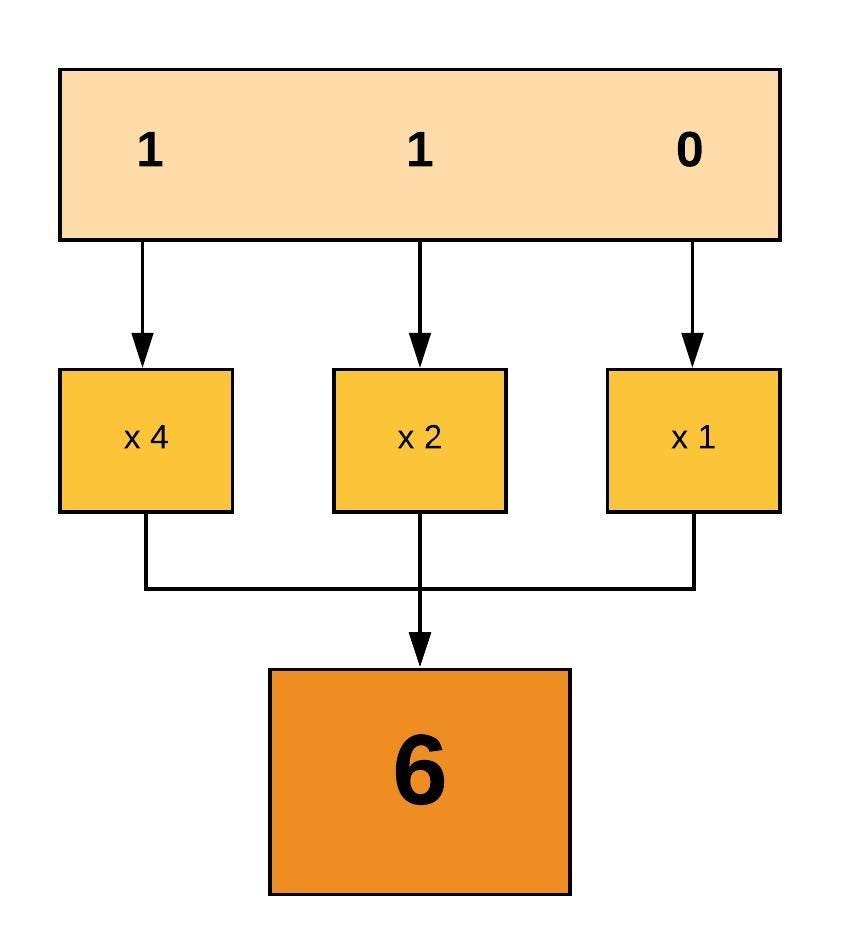
Linux File Permissions And Ownership By Udara Bibile Level Up Coding
Chmod all permissions to file
Chmod all permissions to file-If you use chmod 777 that means you assigned all the permissions ie to make file readable, writable and executable by everyone chmod 775 /path/to/file chmod command uses & Explanation chmod is a command to change permission of a file It stands for change mode The number "775" is to provide permission to the fileGroup members and other users can read and execute, but cannot write
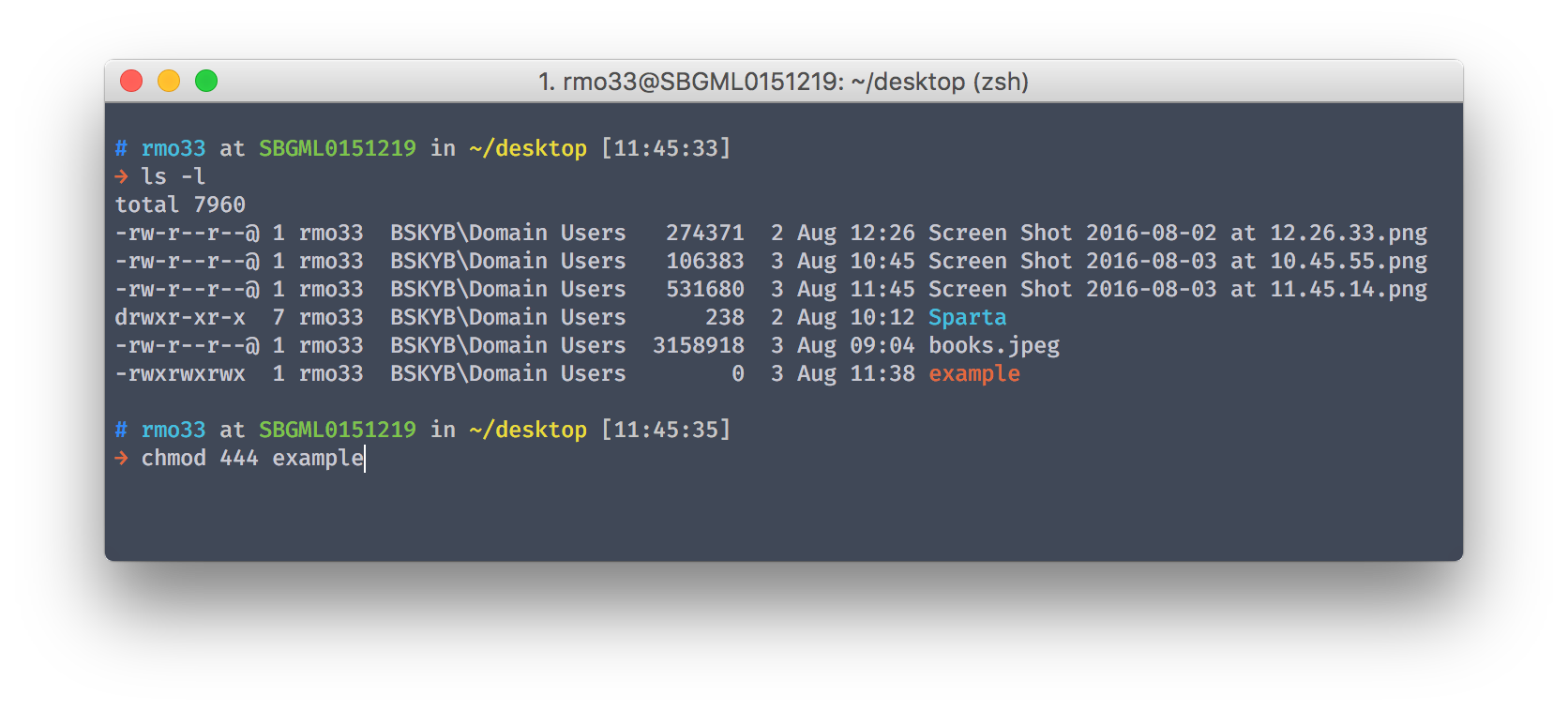


Chmod Tutorial This Is A Quick Alternative Tutorial On By Ryan Morrison Medium
Image link chmod permission for user I am trying to understand different permission for text file in linux , please refer the image i have attached i want to ask two question 1 when the text fileAs all Linux users, you will at some point need to modify the permission settings of a file/directory The command that executes such tasks is the chmod command The basic syntax is chmod permission file_name There are two ways to define permission using symbols (alphanumerical characters) using the octal notation methodRemove the read, write, and execute permission for all users except the file's owner chmod
I want to add to the answers above that for me my home directory (~/) also needed to have the permissions 755, regardless of the permissions of ~/ssh and the files therein (This was on a Synology NAS, might not apply to all linuxes) – hoelk May 30 '18 at 10If you use chmod 777 that means you assigned all the permissions ie to make file readable, writable and executable by everyone chmod 775 /path/to/file chmod command uses & Explanation chmod is a command to change permission of a file It stands for change mode The number "775" is to provide permission to the fileTo change the permissions of a file, one uses the chmod command, with the following syntax chmod referencesoperatormodes filename The references are shorthand (u, g, or o) for each class The operator determines whether to add (), remove () or explicitly set (=) the particular permissions
1 Read permission is added for all $ chmod ar file 2 Execute permission is removed for all $ chmod ax file 3 Change the permissions of the file to read and write for all $ chmod arw file 4 Read and write permissions are set for the owner, all permissions are cleared for the group and others $ chmod u=rw,go= file 5To assign 755 permission of all files and directories under /opt/dir # chmod c R 755 /opt/dir This would also remove any special permission if already assigned to any of the files or directories under /opt/dir For example, I created a file with Sticky Bit Special permission under /opt/dirChmod Changing The File Permissions To change the file permissions at all, you must be the owner of the file or you must be the root user The root user can change any permission bit This may not be true of the owner The one bit that the owner may not be able to switch on is the SGID bit



Linux For Programmers File Permissions And Chmod
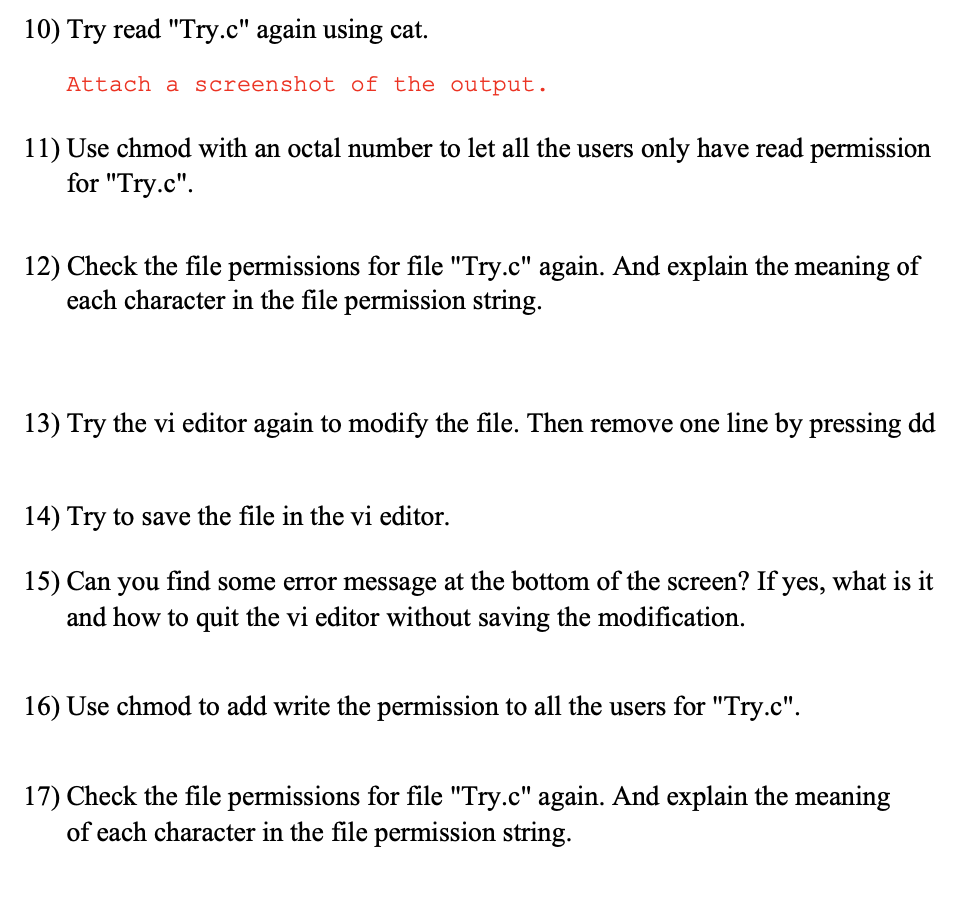


Solved Part 3 Permissions For Files Follow The Instructi Chegg Com
With the Linux chmod command, we can recursively change file permissions on all files and directories This guide explains how It's likely you've run into the following errors before For any system files, using sudo is the preferred way of editing a file This allows you to keep all the system contextSet permissions on files & directories using chmod in Ubuntu First, we will discuss user related permissions – this will make modifications to first three characters aforementioned To add permissions for a user, we can use following combinations – chmod ur ABCtxt chmod uw ABCtxt chmod ux ABCtxt where,Chmod PERMISSIONS FILE Role & Permission Types To understand file permission you must know about Roles and Permission types There are three types of roles available in Linux systems (User, Group, and Others) Each role has 3 types of permissions (Read, Write, and Execute) Roles User (Owner) Group (All group members) Other (All other



Change File Permissions In Mac Os X Osxdaily



How To Use Chmod Command In Linux Explained With Examples
To remove world read permission from a file you would type chmod or filename To remove group read and execute permission while adding the same permission to world you would type chmod grx,orx filename To remove all permissions for group and world you would type chmod go= filename Sound a bit complex?Other people in the same group as the owner;4 The permission itself, can be (r) read, (w) write or (x) execute, or all of them 5 The name of the file or directory that you want to apply all of these permissions Let's see some examples 1 — User can read a file named "testtxt" chmod ur testtxt



Permissions And Executables A Primer For Computational Biology
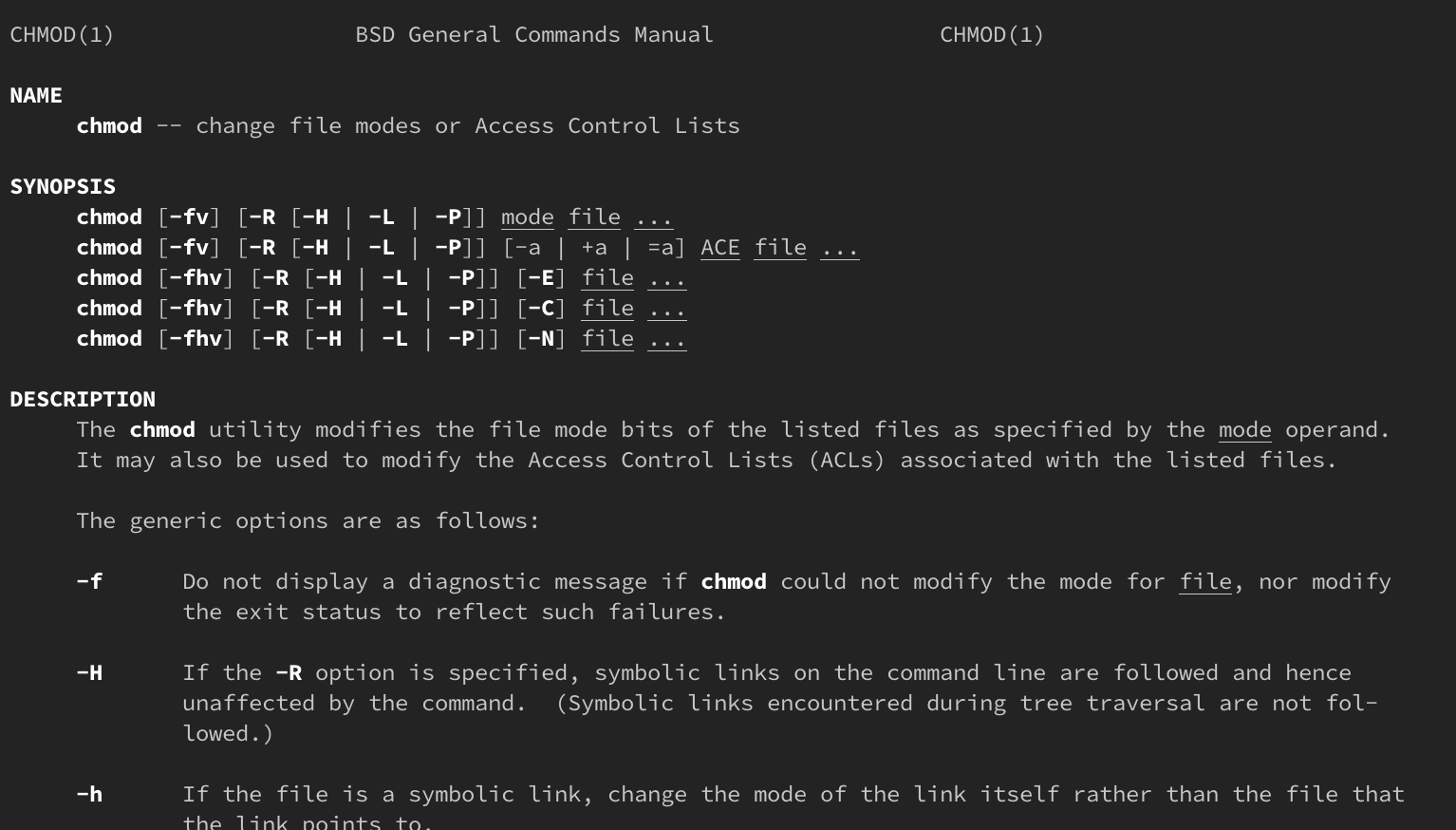


How Do Linux Permissions Work
Image link chmod permission for user I am trying to understand different permission for text file in linux , please refer the image i have attached i want to ask two question 1 when the text fileOthers can read only" chmod R 755 myfiles Recursively (R) Change the permissions of the directory myfiles, and all folders and files it contains, to mode 755 User can read, write, and execute;To turn on read, write, and execute permissions, and turn off the setuserID bit, setgroupID bit, and sticky bit attributes This is equivalent to chmod 0777 aprsal chmod a=rwx aprsal;



Linux File Permissions And Ownership By Udara Bibile Level Up Coding



Give Permissions In Ubuntu Itechzo Give Permissions In Ubuntu
4 The permission itself, can be (r) read, (w) write or (x) execute, or all of them 5 The name of the file or directory that you want to apply all of these permissions Let's see some examples 1 — User can read a file named "testtxt" chmod ur testtxtWhen chmod with –R is used to apply permission in a directory, it assigns the same permission to all the files and subdirectories under it However sometimes, you may want to give separate permissions to files and directoriesThe chmod command in Linux is used to change file and directory permissions using either text (symbolic) or numeric (octal) notation It takes the following syntax $ chmod OPTIONS MODE filename Only the root user or a regular user with sudo privileges can change file or directory permissions



How To Set File Permissions Using Chmod Unix Information Technology Management



Linux Terminal File Permissions Chmod Chown And Chgrp Linux Line Tools Thing 1
These can be used to keep someone from accessing the file, or say allow only a user to access or write a file to directory chmod is how we handle the file permissions Lets see few example Apply permission on all files in directories/ subdirectories files recursivelyTo set user (owner) executable permission bit on chmod ux fileYou can use the "ls all" command to see the chmod permissions on a directory or file



Is There A Way I Can Give Read Write Permissions To Myself For System Files On Mac Osx 10 11 2 Super User



Permissions How Can I Become The Owner Of A File Folder That Root Owns Ask Ubuntu
Chmod Modifies File Permissions In Linux, who can do what to a file or directory is controlled through sets of permissions There are three sets of permissions One set for the owner of the file, another set for the members of the file's group, and a final set for everyone else The permissions control the actions that can be performed on the file or directoryIn the case of any files or directory, these three permissions are the same but may have different meanings For example, a If a file has the read permission of Chmod 777, then you can read it with the help of a regular text editor For a folder, you can read all the files inside that particular folder bOften after downloading an executable file you will need to add this permission before using it To give owner, group and everyone else permission to execute file chmod x /path/to/file chmod 755 Only owner can write, read and execute for everyone This next command will set the following permission on file rwxrxrx Only the owner will be allowed to write to the file



Chmod How To Set File And Directory Permission In Linux Using Chmod Youtube



Linux File Permissions Explained Symbolic Permissions And Chmod Part 1 Youtube
Then use the following command to chmod 0640 to all file with php extension find type f name "*php" exec chmod 0640 {} \;Examples chmod 644 filehtm Set the permissions of filehtm to "owner can read and write;Once again, we use 'group' and 'other' but we use '' to allow the execute ('x') permission $ chmod gox /var/www Next, change all directories and files in the web root to the same group (wwwdata) just in case there are files in there currently $ chgrp R wwwdata /var/www



Linux File Permission Explained In Easy Language
/GettyImages-1021092796-ea8c63ee76f84bd5bf98c4222337fbb4.jpg)


How To Use The Chmod Command In Linux
Chmod Changing The File Permissions To change the file permissions at all, you must be the owner of the file or you must be the root user The root user can change any permission bit This may not be true of the owner The one bit that the owner may not be able to switch on is the SGID bitIf in group permissions section, thesetgroupID bit is on A superuser or the file owner can use a chmodcommandor chmod() function to change two options for an executable fileIt is common to use the basic chmod command to change the permission of a single file However, you may need to modify the permission recursively for all files within a directory In such cases, the chmod recursive option (R or recursive) sets the permission for a directory (and the files it contains)
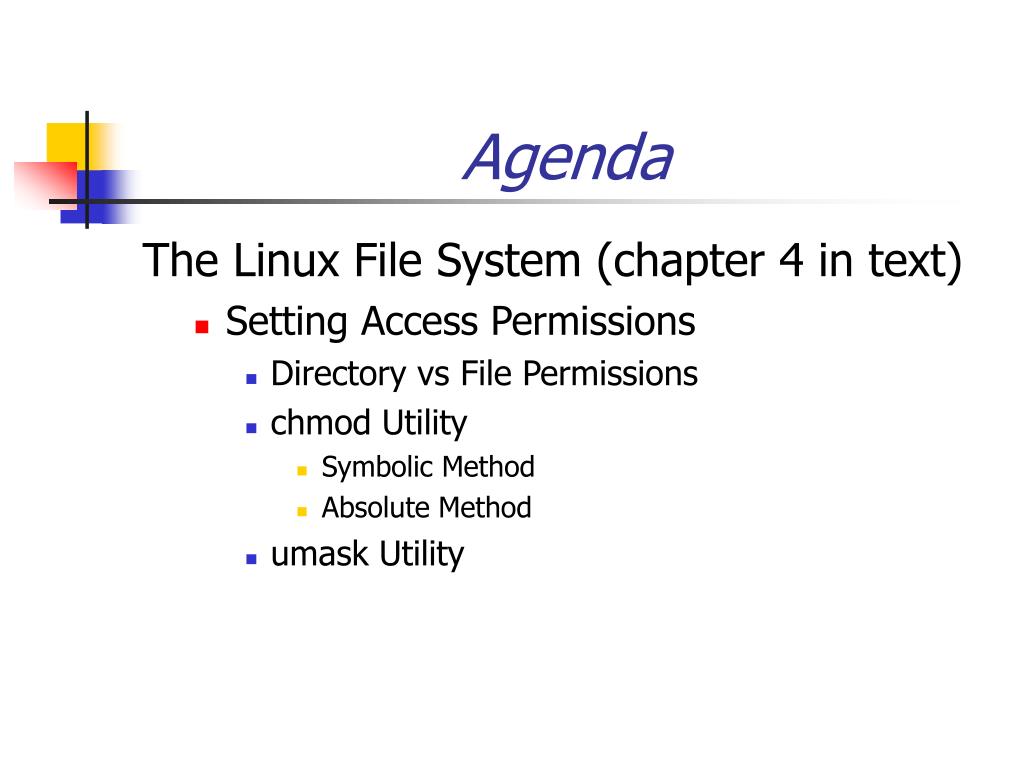


Ppt Agenda Powerpoint Presentation Free Download Id



Shell Scripting Tutorial Chmod Chown Changing File Directory Permissions Tech Arkit Youtube
Image link chmod permission for user I am trying to understand different permission for text file in linux , please refer the image i have attached i want to ask two question 1 when the text fileWrite permission If this is off, you cannot write to the file s If in owner permissions section, the setuserID bit is on;The chmod command with the R options allows you to recursively change the file's permissions To recursively set permissions of files based on their type, use chmod in combination with the find command If you have any questions or feedback, feel free to leave a comment chmod terminal
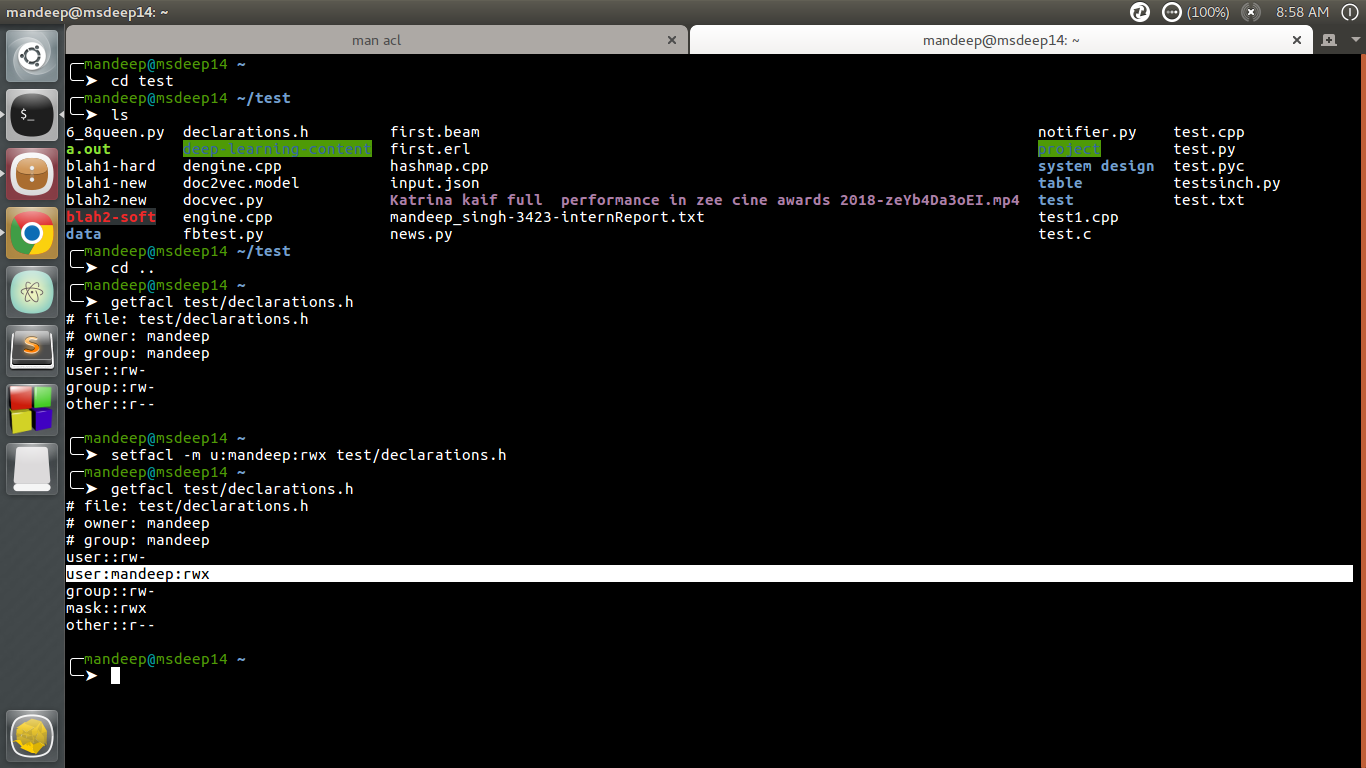


Access Control Lists Acl In Linux Geeksforgeeks



Permissions And Executables A Primer For Computational Biology
How to Change File and Folder Permissions We will be using the chmod command to change file and folder permissions in Linux But first, you need to be aware that there are three types of users who can interact with a file Owner — the user who creates and owns a file or folder Group — all users who are members of the same groupTherefore, when setting permissions on a file, you will want to assign all three levels of permissions, and not just one user Think of the chmod command actually having the following syntax chmod owner group world FileNameFiles and directories in Unix may have three types of permissions read (r), write (w), and execute (x)Each permission may be on or off for each of three categories of users the file or directory owner;



I Need Help In Laravel 5 4 Permission Denied Stack Overflow
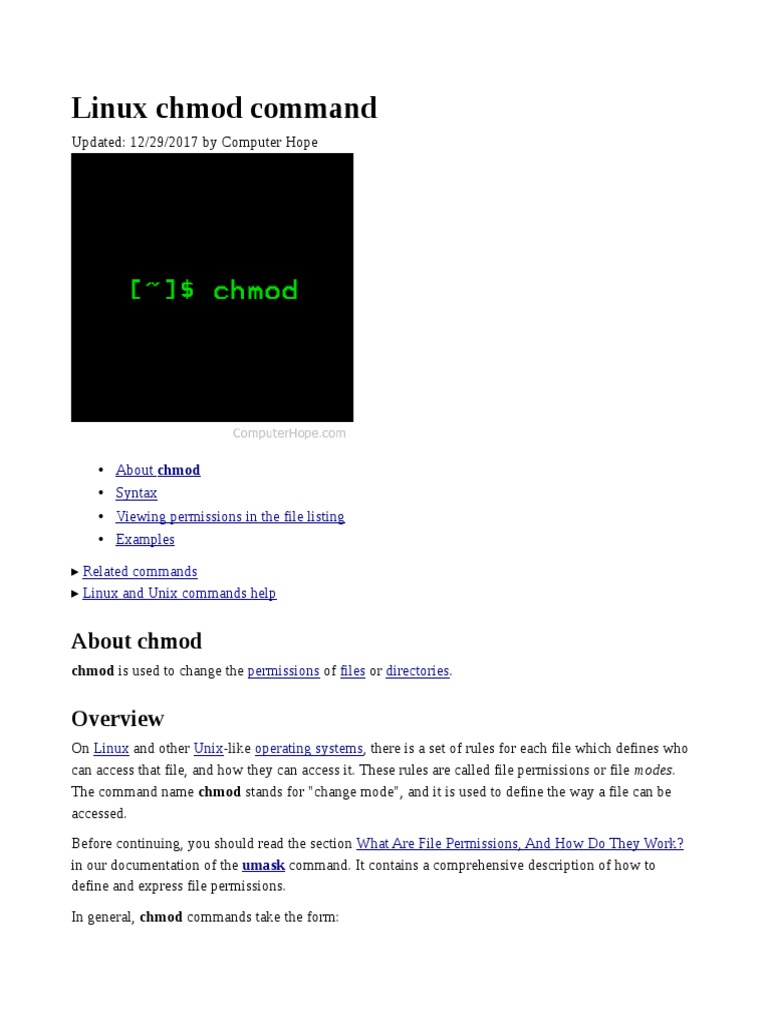


Linux Chmod Command Utility Software Computer File
Chmod Changing The File Permissions To change the file permissions at all, you must be the owner of the file or you must be the root user The root user can change any permission bit This may not be true of the owner The one bit that the owner may not be able to switch on is the SGID bitI want to add to the answers above that for me my home directory (~/) also needed to have the permissions 755, regardless of the permissions of ~/ssh and the files therein (This was on a Synology NAS, might not apply to all linuxes) – hoelk May 30 '18 at 10Windows doesn't use anything so primitive as a bunch of numbers to represent permissions On Lunix, chmod 777 sets permissions to be read, write, executable by everyone Unix permissions work simply enough, but they are caveman shit for



Chmod X Explained Everything You Need To Know



Explained How To Use Chmod Command Complete Guide Youtube
There is an alternativeChmod is command which changes permission of a file or folder for particular user or group as per instructions provided chmod command is followed by which level user ie user, group or all After user level we have provide what needs to be done ie for adding and – for removingAnd all others To change the mode of a file, use the chmod command
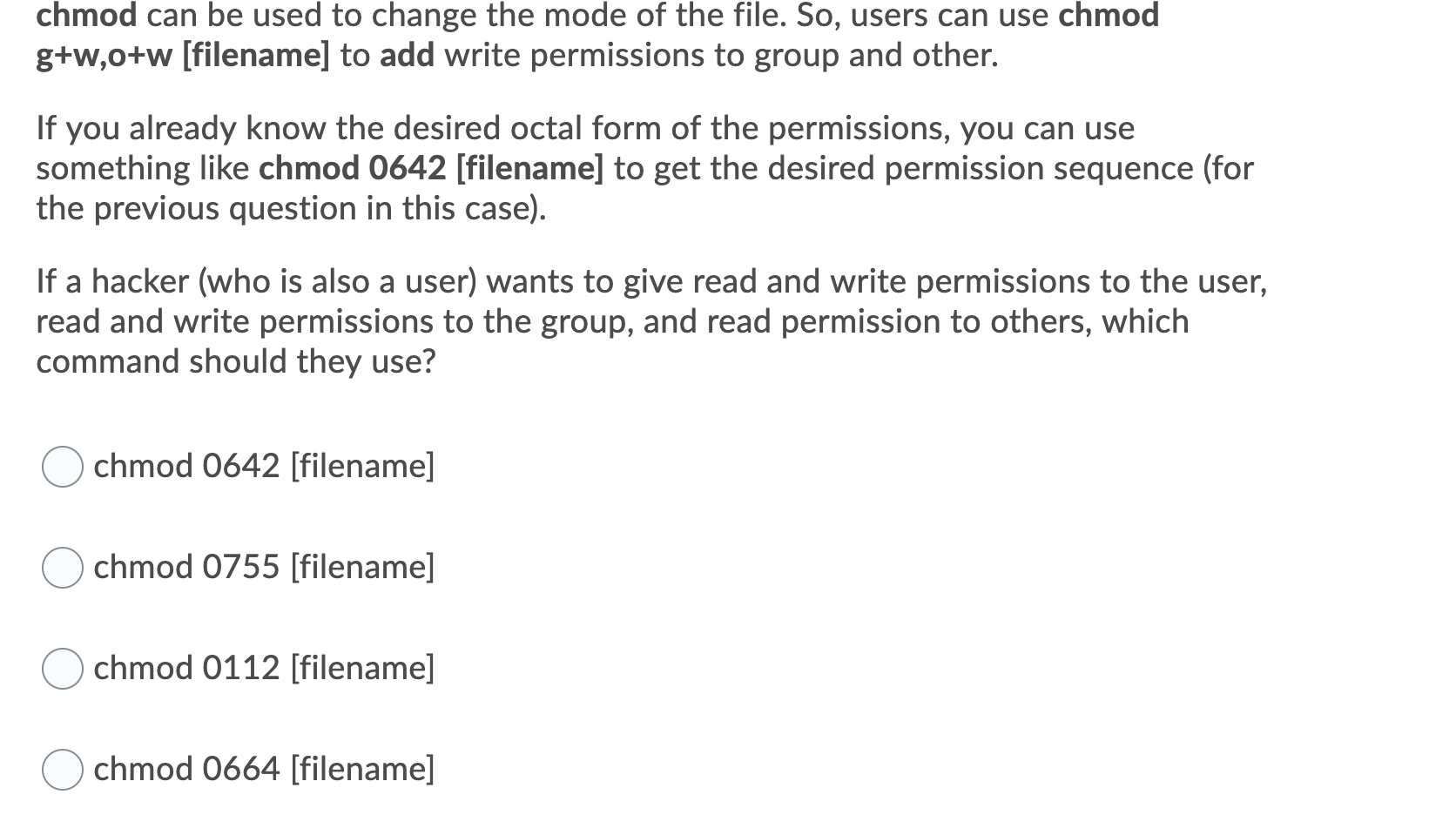


Solved Chmod Can Be Used To Change The Mode Of The File Chegg Com



File Ownership And Permissions Spinupwp
1 If you want to execute permission management of multiple files,(comma) Separate usage chmod uw gr file or directory chmod g=rwe file or directory 3R optionmodify the permissions of the dirChmod rwx filename to add permissions chmod rwx directoryname to remove permissions chmod x filename to allow executable permissions chmod wx filename to take out write and executable permissions Note that "r" is for read, "w" is for write, and "x" is for execute This only changes the permissions for the owner of the fileThe file permission 0640 will restrict others with no permissions This will add an extra layer of permissions Conclusion In this tutorial, you have learned to chmod all files or directories available under a



Quiz Worksheet Special Permissions Access Control Filesystem Attributes In Linux Study Com



File And Folder Permission Settings For Wordpress Folder On Linux Stack Overflow
1 If you want to execute permission management of multiple files,(comma) Separate usage chmod uw gr file or directory chmod g=rwe file or directory 3R optionmodify the permissions of the dirSetting File Permissions To set file permissions, you'll use the chmodcommand at the terminal To remove all existing permissions, set read and write access for the user while allowing read access for all other users, type chmod u=rw,g=r,o=r filetxt The u flag sets the permissions for the file owner, g refers to the user group, while oTo set all permission bits on (anyone can read/write/execute) chmod 777 scratch;
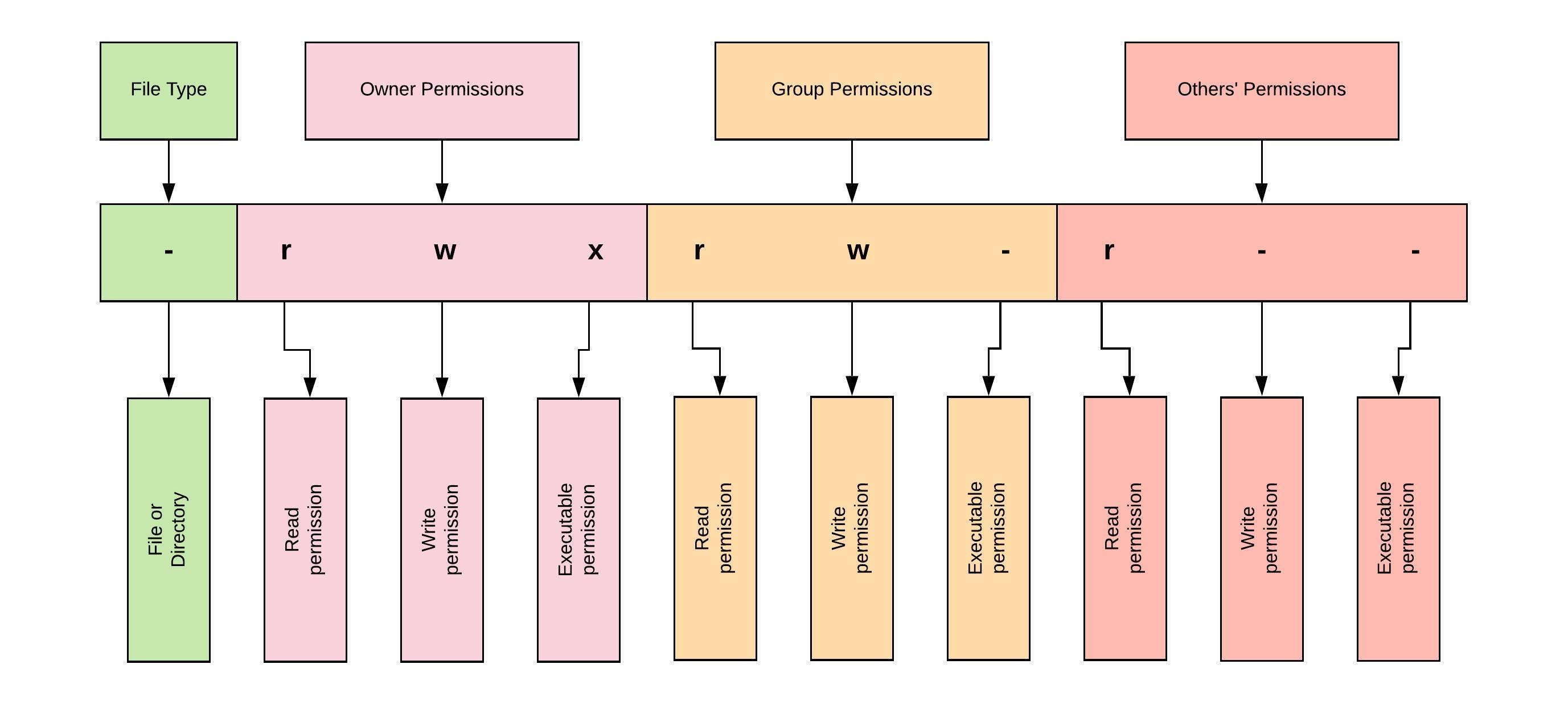


Linux File Permissions And Ownership By Udara Bibile Level Up Coding


Give Write Access Chmod 775
Syntax chmod categorization permission filename example chmod ur filetxt operation specified the actiob to be performed assign permission – remove permission = assign absolute permission for all permission specified r,w,x(read,write,execute) 2)Absolute permission permission specified by setting all nine permission bits explicitlyin theI want to add to the answers above that for me my home directory (~/) also needed to have the permissions 755, regardless of the permissions of ~/ssh and the files therein (This was on a Synology NAS, might not apply to all linuxes) – hoelk May 30 '18 at 10
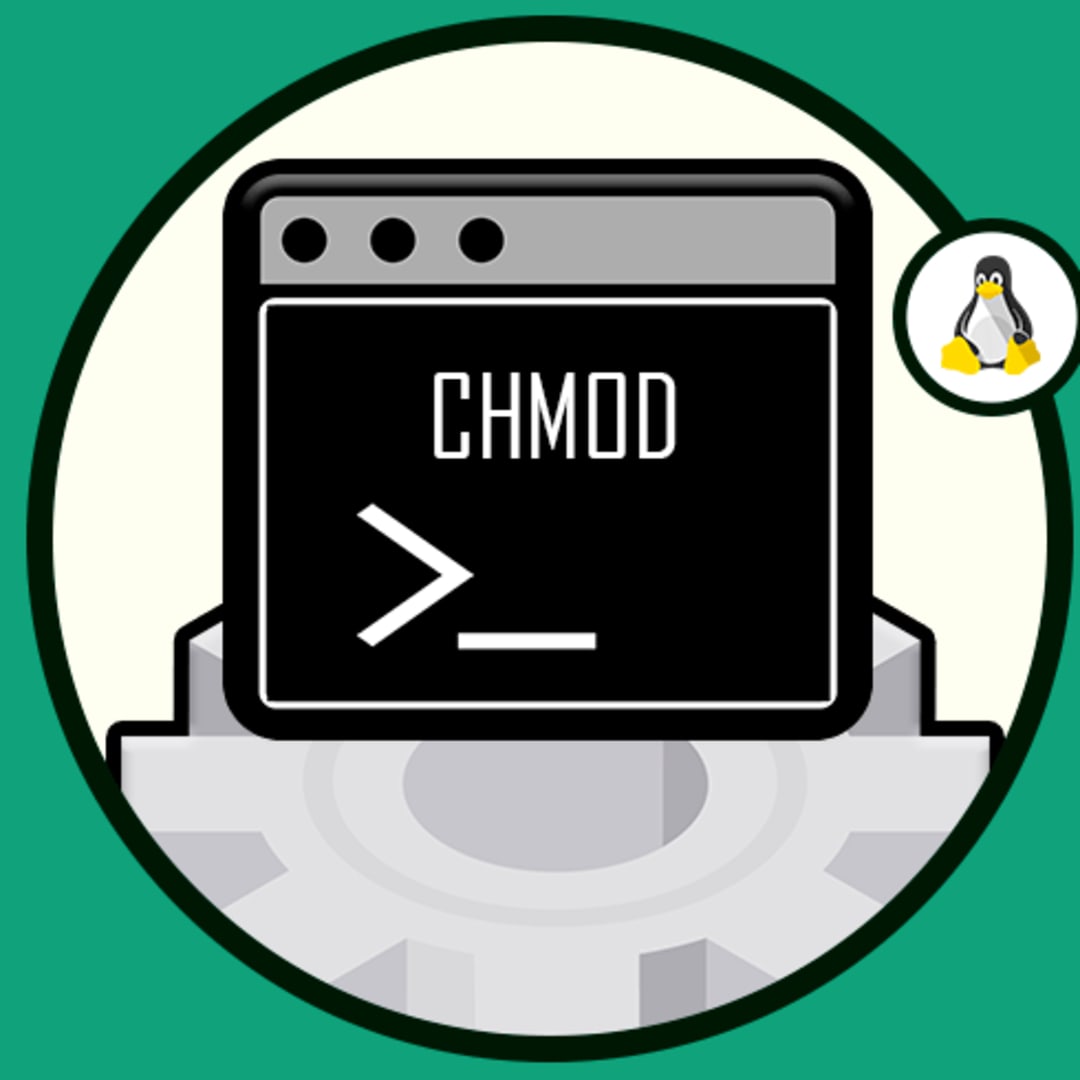


How To Set Chmod 777 To A Folder And All Its Contents Dev Community



Solved What Is The Right Chmod Or File Permissions General Topics Prestashop Forums



Permission Denied Inside Var Www Html When Creating A Website And It S Files With The Apache2 Server Stack Overflow



Chmod File Permissions In Linux Unix Linux Angular Angular Js Jquery Php Mysql And Web Development Tutorials


File Permissions Chmod Page 2 Linux Org



Understand Linux System File Permission



Technology World Important File And Directory Permissions In Unix
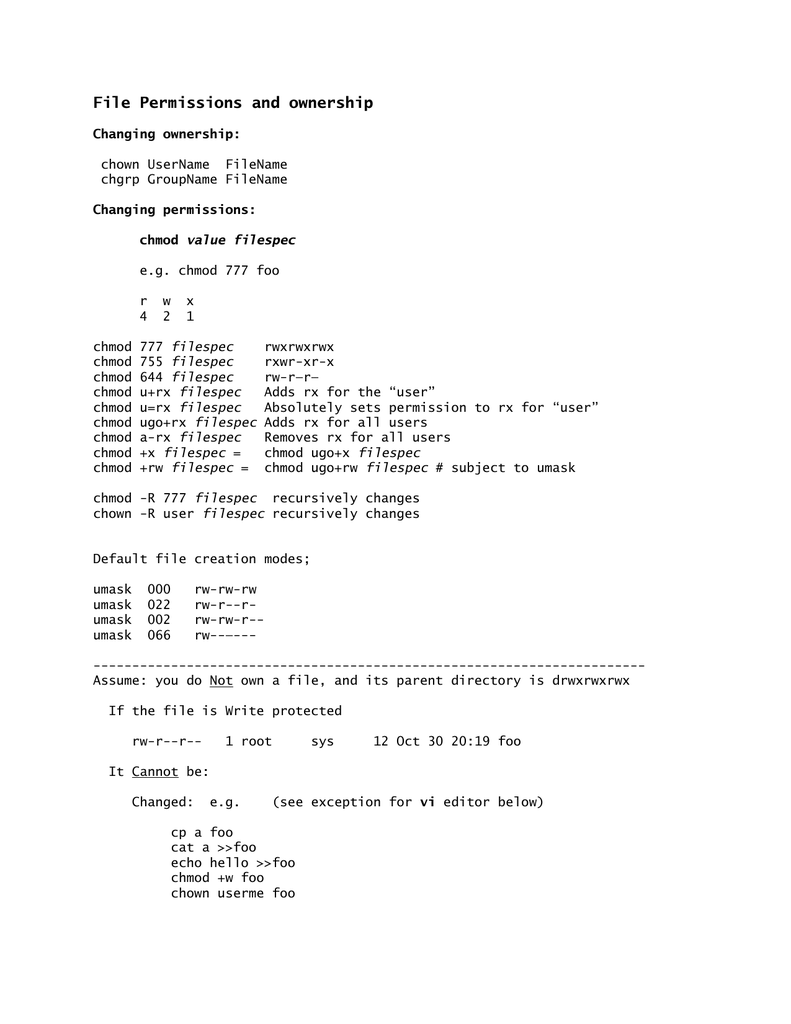


File Permissions And Ownership
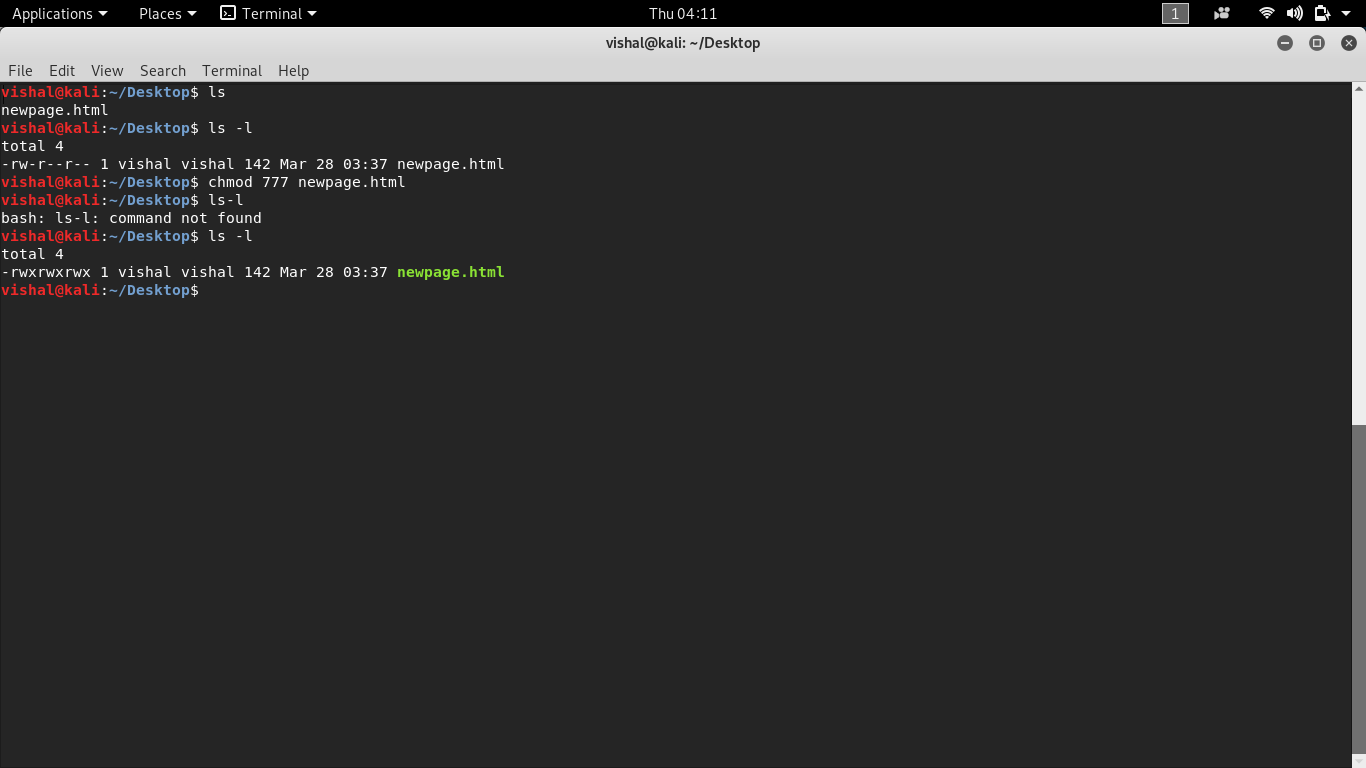


Unix Commands Basic To Advanced Unix Commands With Example



Linux Chmod File Permissions Decoded From The 1980s Rickyadams Com



Linux File Permissions Chmod Umask Tutonics Linux Reading Writing Tutorial



How To Modify The File S And Directories Permission In Linux Vasanth Blog



Linux Cheat Sheet


Unix Permissions By Julia Evans Linux
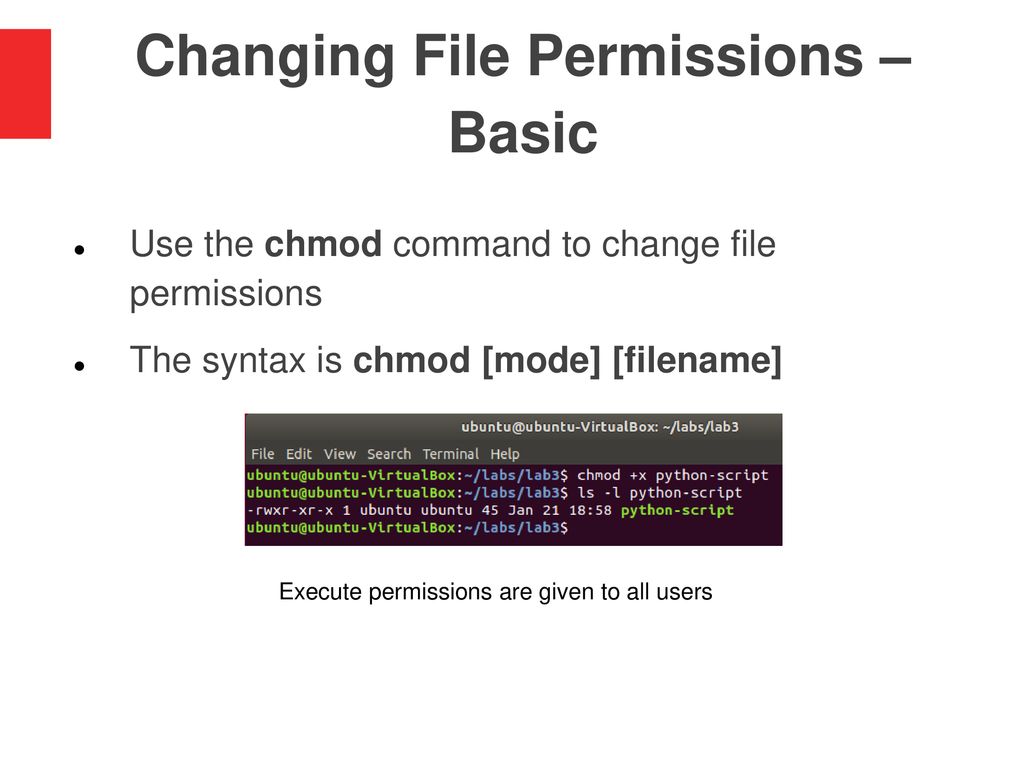


Lab 3 File Permissions Ppt Download



How To Manage File Permissions On Ubuntu Server 04 Dev Tutorial



Linux Commands 5 File Permission Chmod Youtube



Linux File Permissions Programmer Sought



File And Directory Permissions Chmod Change Owner And Belonging Group Chown Umask Hide Permissions Lsattr Chattr Programmer Sought



Linux Modify The File Permissions Chmod Programmer Sought
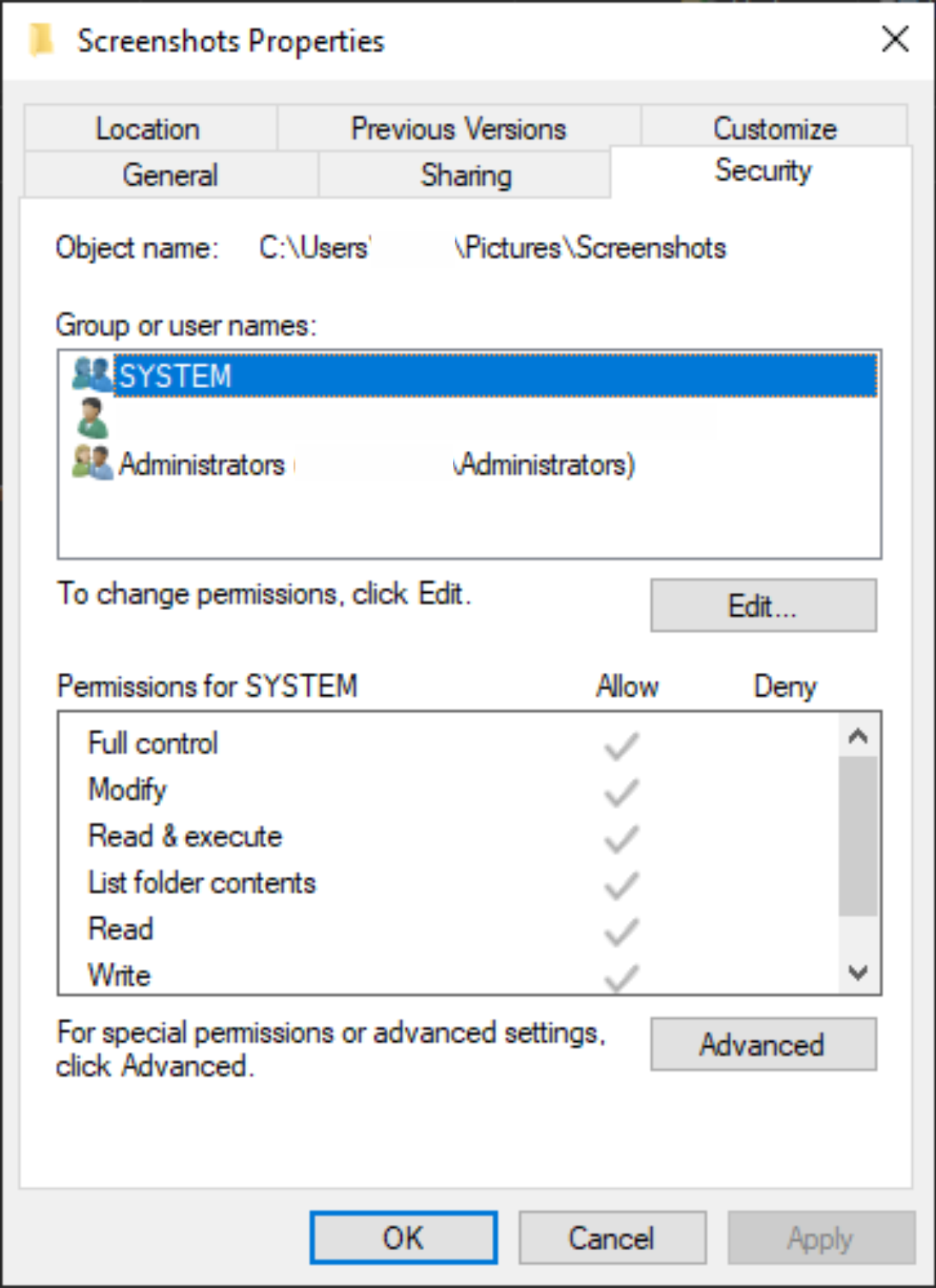


What Is Chmod In Windows



Directory How Can I Change Permissions Of A Folder Including Its Enclosed Files And Subdirectories Ask Ubuntu
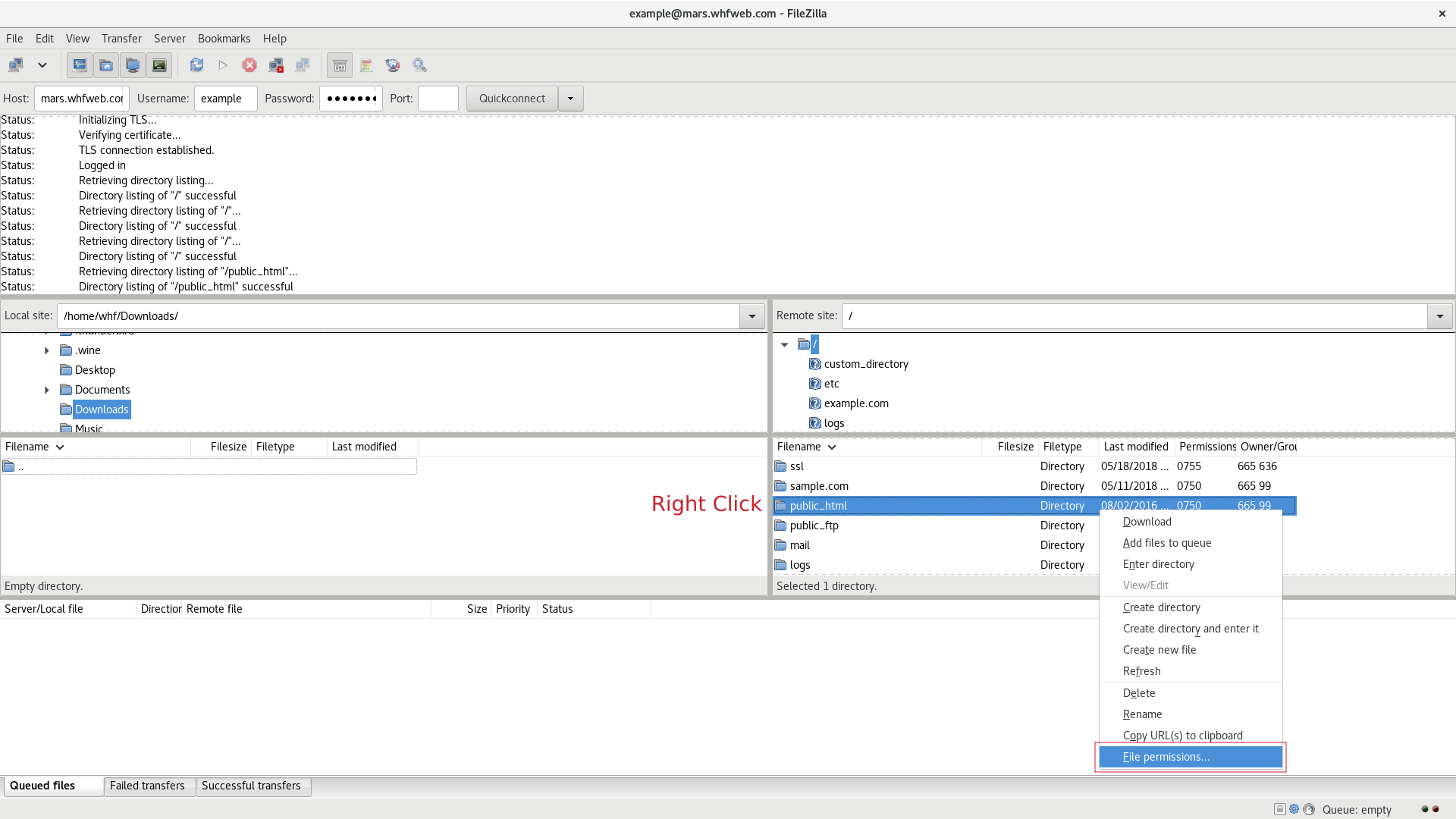


Change Permissions Of Files And Folders In Filezilla In Your Linux Hosting



Linux Hayward Dot Click



Chmod Tutorial This Is A Quick Alternative Tutorial On By Ryan Morrison Medium
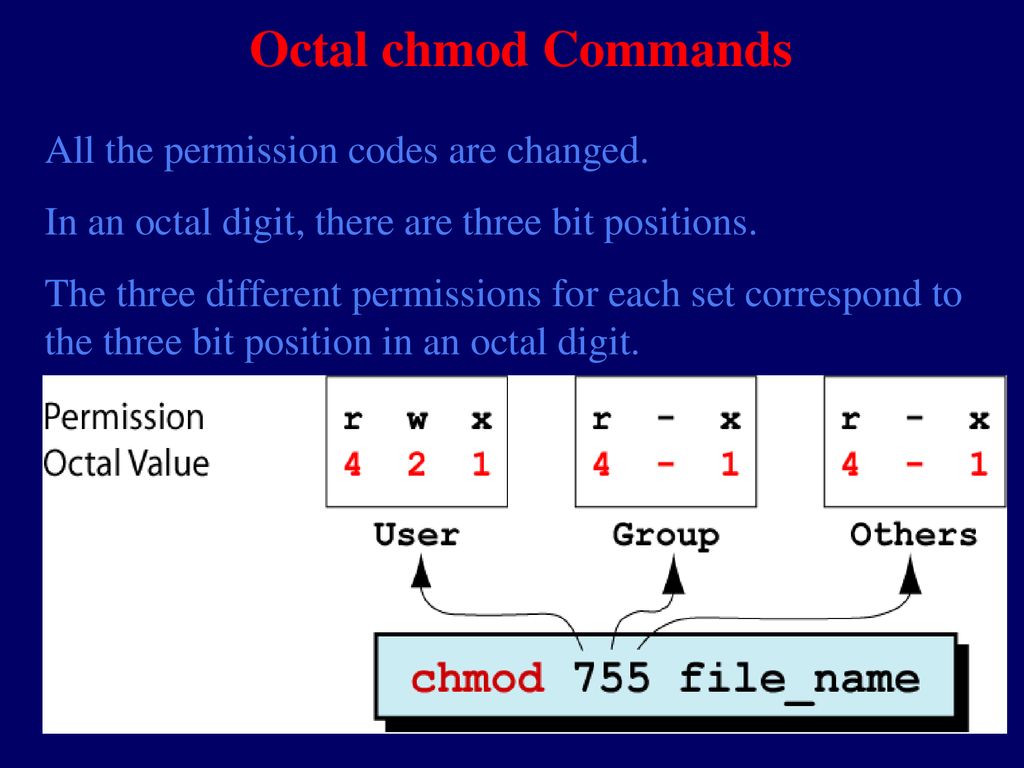


Security And File Permission Ppt Download
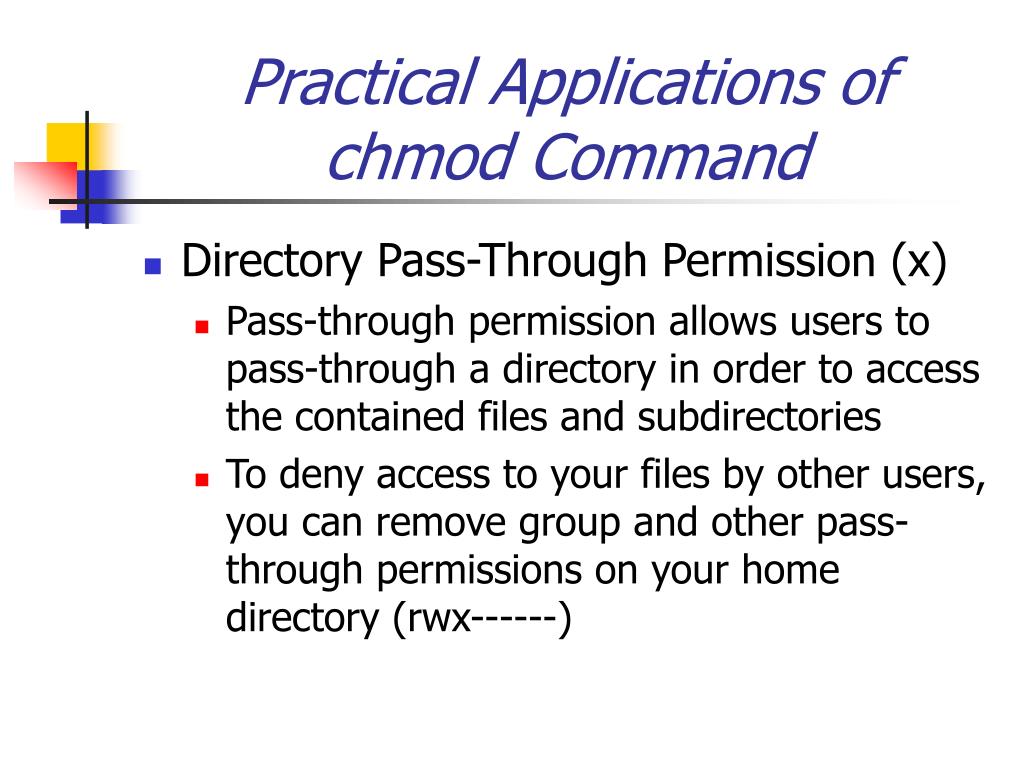


Ppt Agenda Powerpoint Presentation Free Download Id



How To Give Proper File And Directory Permission For Magento Localhost Magento Stack Exchange



Chmod 777 What Does It Really Mean Make Tech Easier



Fixing Permissions On The Files Directory In Drupal



Change File Permissions Easily With Online Chmod Calculator By Chmodcalcu Issuu
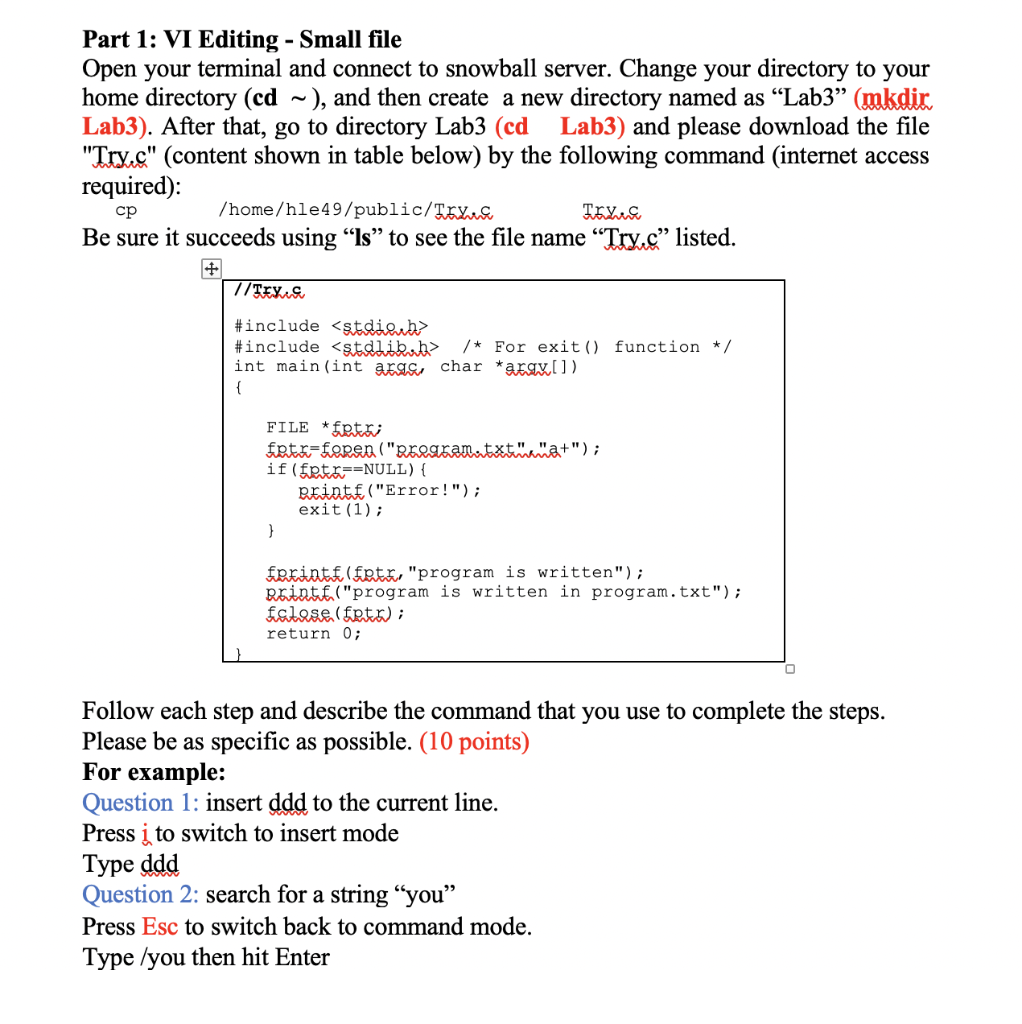


Please Help Me Out This All I Will Give You Helpf Chegg Com



Linux Permissions Making Sense Of 755 And Rwxr Xr X Serverwise


Linux User Group And File Permission Introduction



Chmod 775


I Made This Chmod Cheat Sheet And Thought It Might Be Useful Linux4noobs



Understand Linux File Permissions And Use Chmod Itnext



D 6 Permission Issues And How To Troubleshoot Engineering Libretexts



Chmod Linux File Permission Youtube
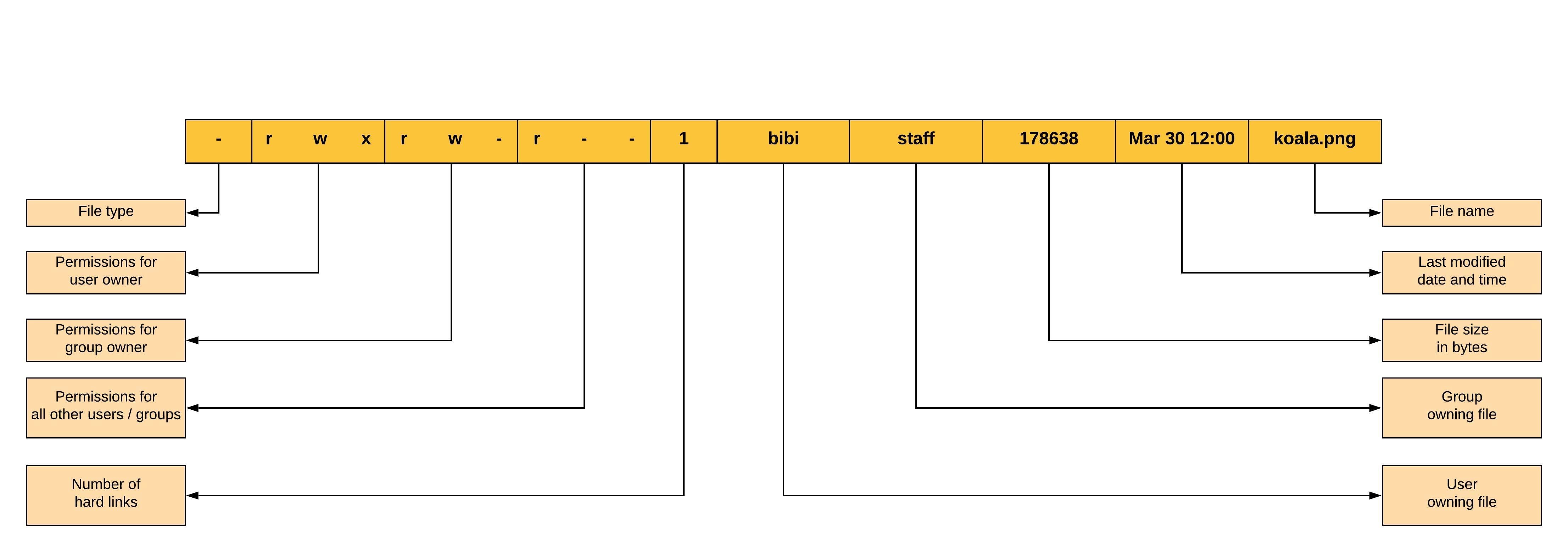


Linux File Permissions And Ownership By Udara Bibile Level Up Coding



Linux Permissions Posix Chmod Chown Chgrp Youtube
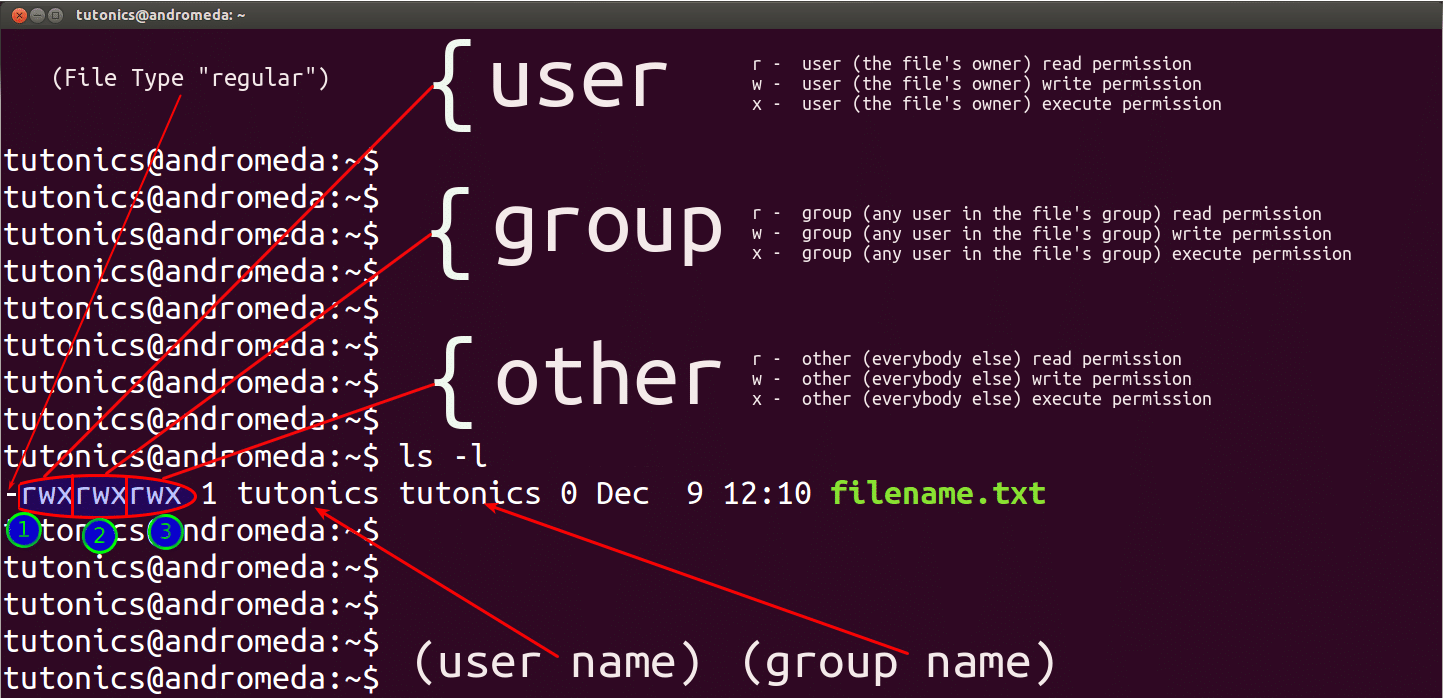


Linux File Permissions Tutorial For Beginners



Managing File Permissions And Ownerships Network Engineer



Chmod 777 A Definitive Guide To File Permissions



Directory How Can I Change Permissions Of A Folder Including Its Enclosed Files And Subdirectories Ask Ubuntu



Teknixx Useful Chmod Sheet Also Check Managing Linux Permissions Http T Co Wvto9iejho Linux Sysadmin Http T Co 4vmufxnlwt



Chmod 777 A Definitive Guide To File Permissions
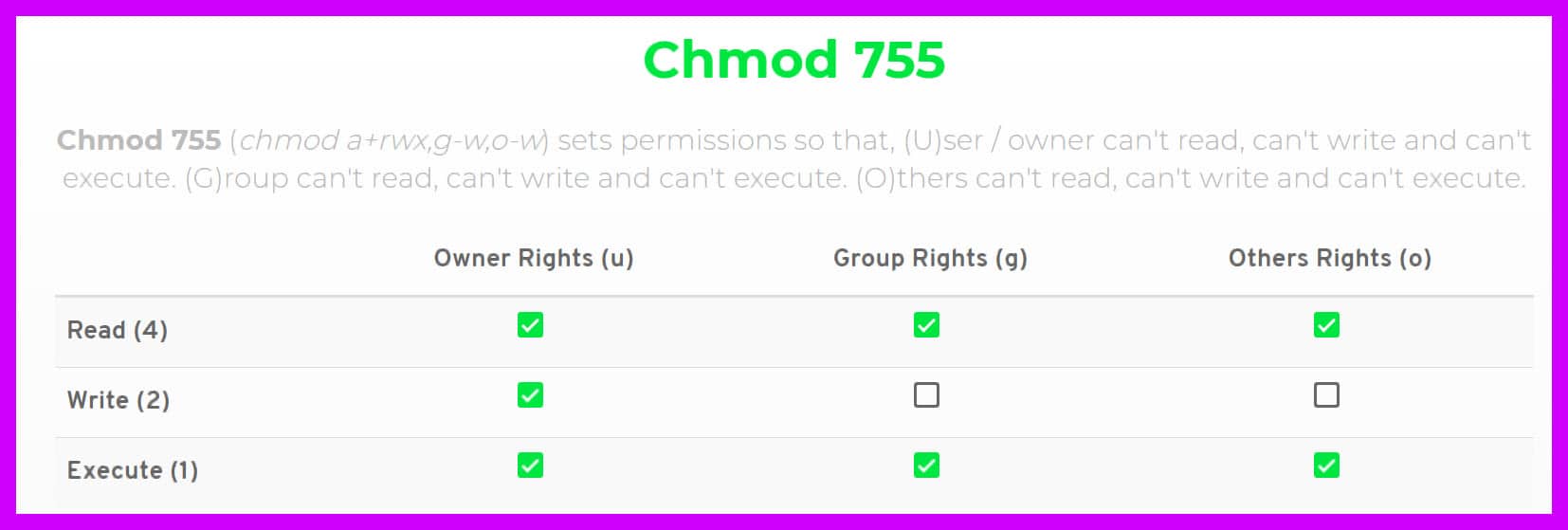


Chmod 777 A Definitive Guide To File Permissions
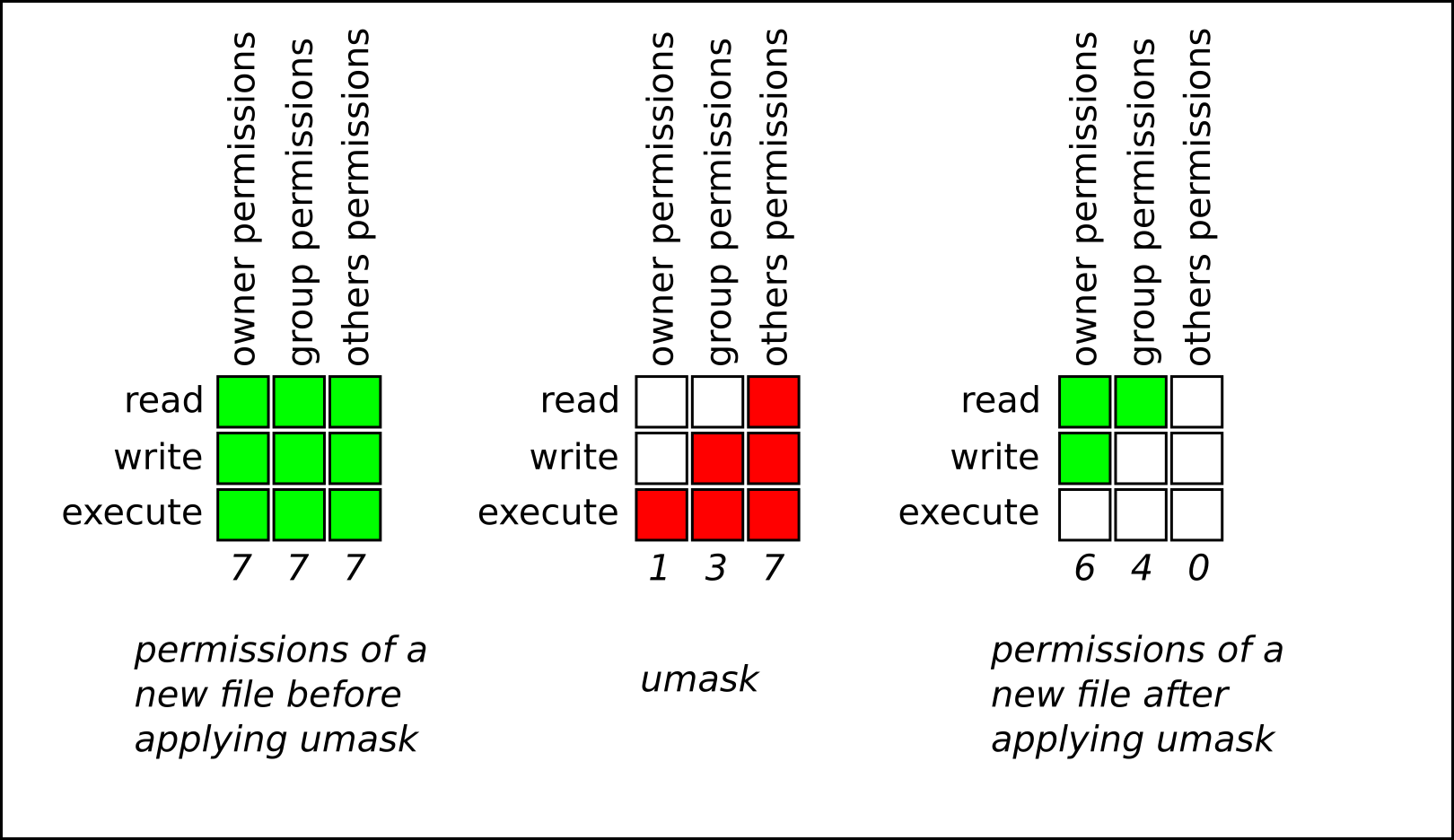


Chapter 10 Managing File Permissions Red Hat Enterprise Linux 8 Red Hat Customer Portal


Set Permissions On Files Directories Using Chmod In Ubuntu Techpiezo



Chmod Calculator Takes The Hassle Out Of Directory Permissions Techfruit
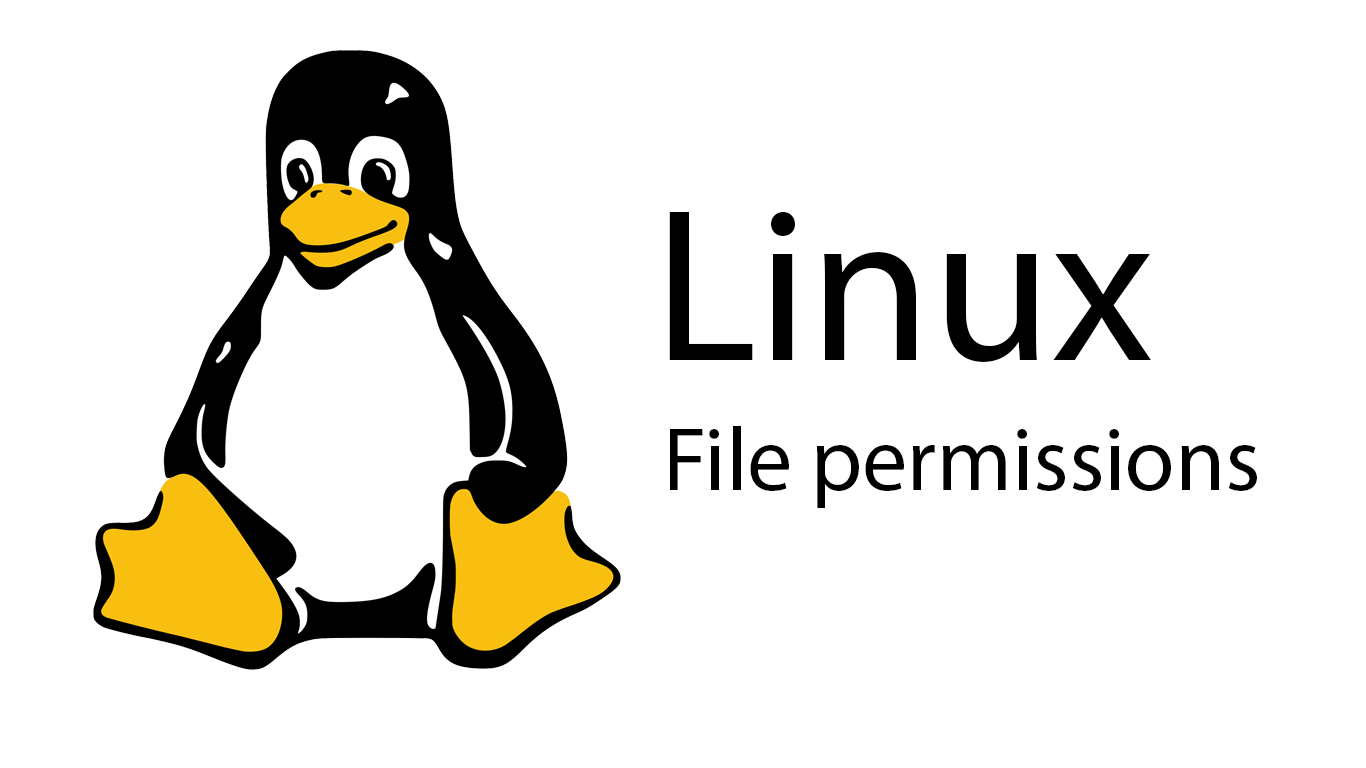


How To Change File Permissions In Linux Skillsugar
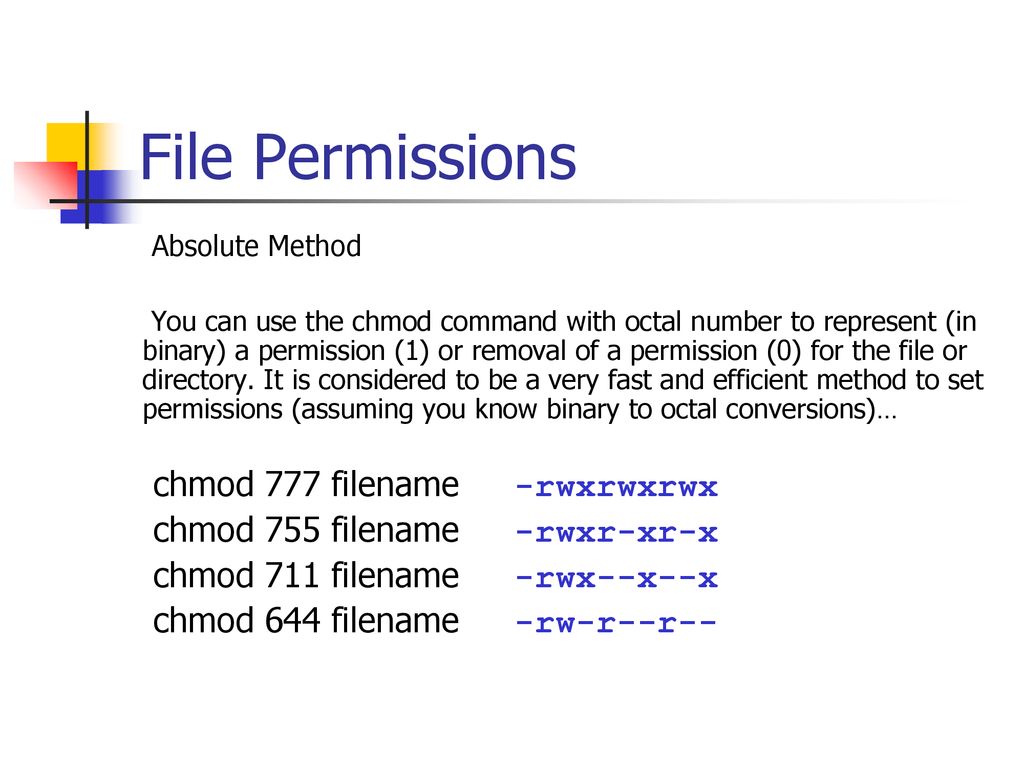


Bif703 File Permissions Ppt Download
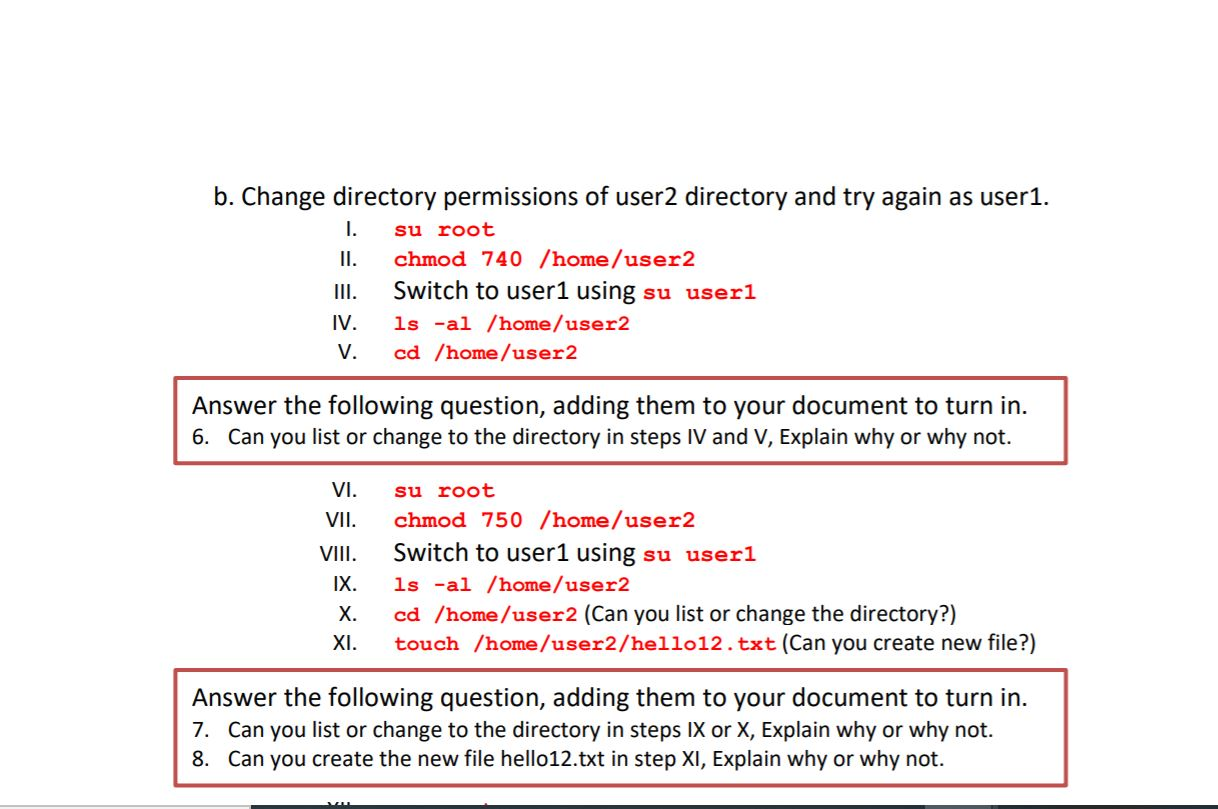


Solved B Change Directory Permissions Of User2 Directory Chegg Com



Managing File System Permissions From The Command Line Changing File And Directory User Or Group Ownership
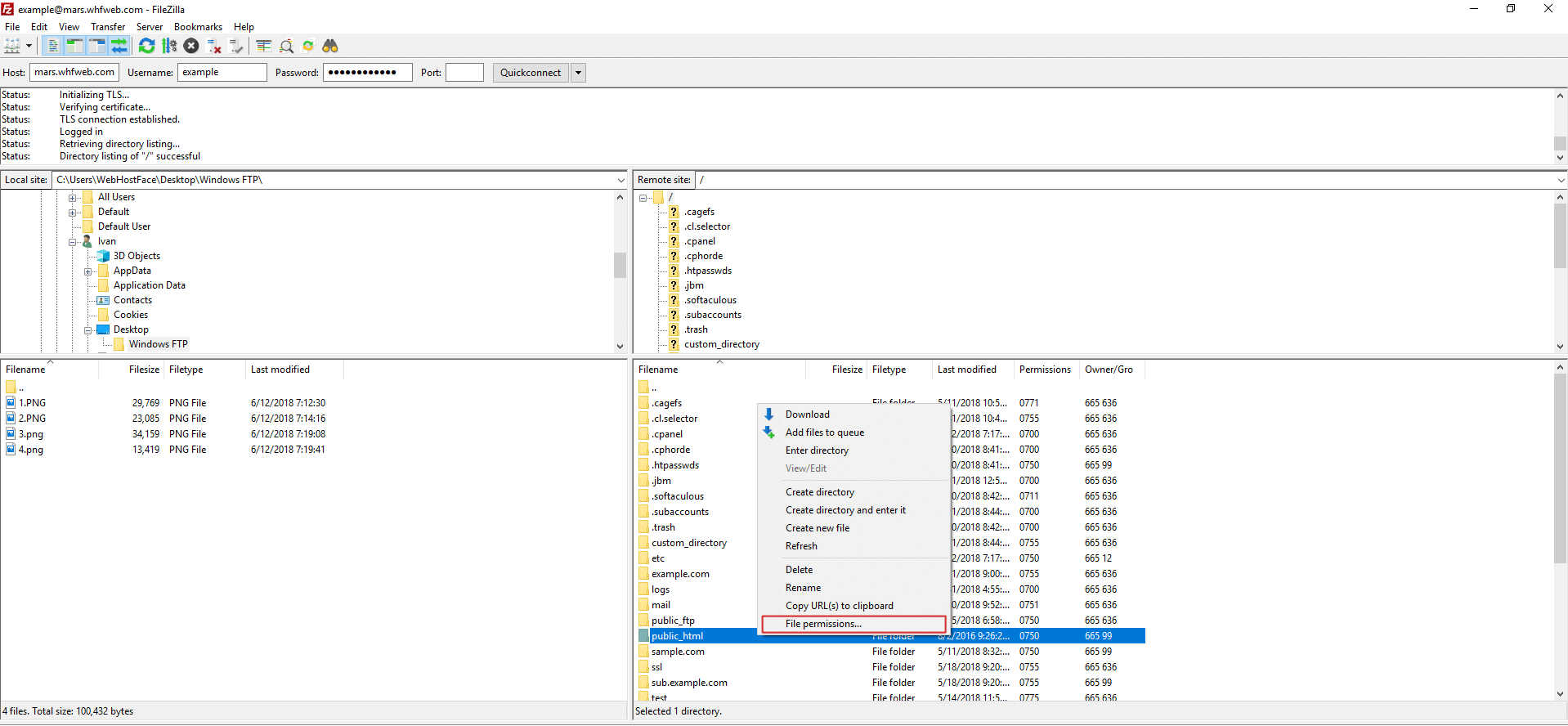


Change Ftp Permissions With Filezilla On Windows Computer



Shell Tutorial Part 9 Changing Permissions Youtube



Permission Assignment Nobody Other Than Owner Can Read The File Automated Hands On Cloudxlab



Sticky Bit In Linux



How To Assign Permissions To Files And Folders In Cpanel Cpanel Blog
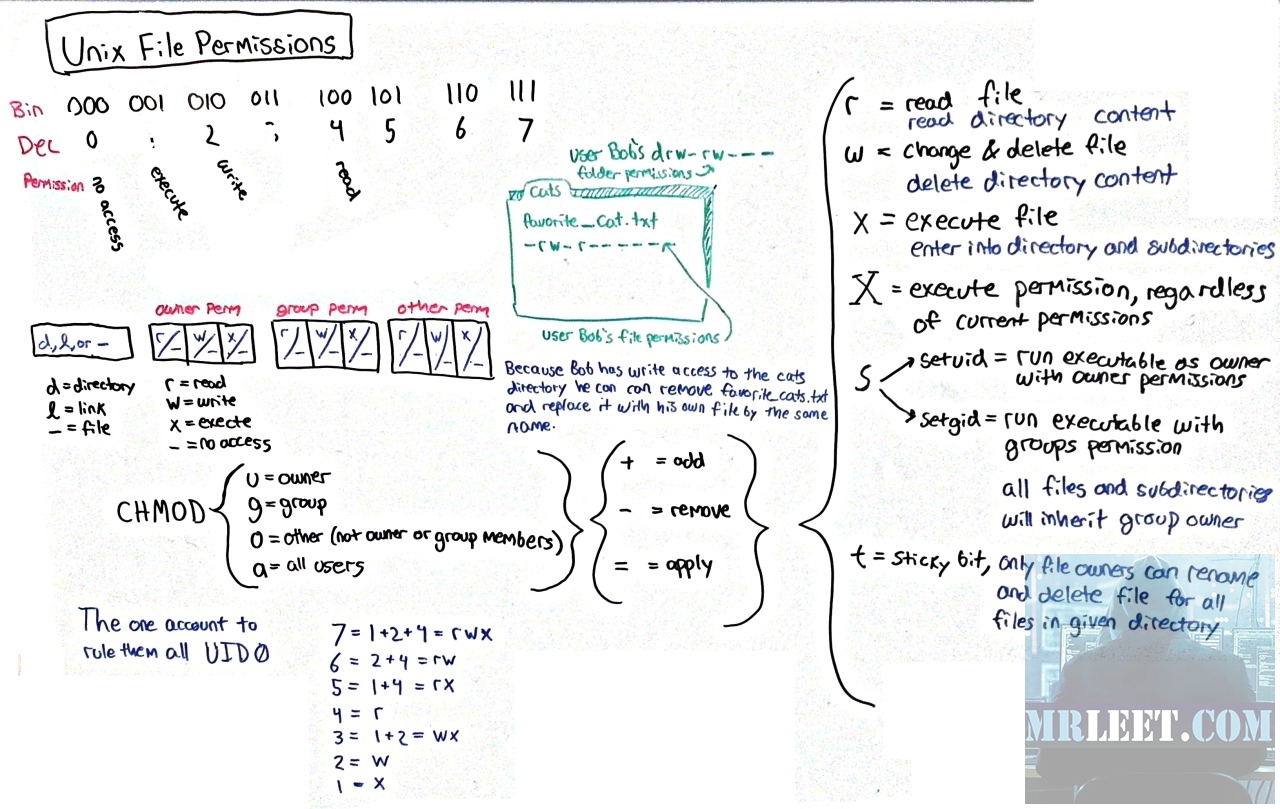


Linux File Permissions And Chmod Mrleet



Linux File Permissions Chmod Umask Tutonics Linux Reading Writing Tutorial



A Bitesize Unix Tutorial With Pixel Art By James Scott Medium



File With Strange Permissions Ask Ubuntu
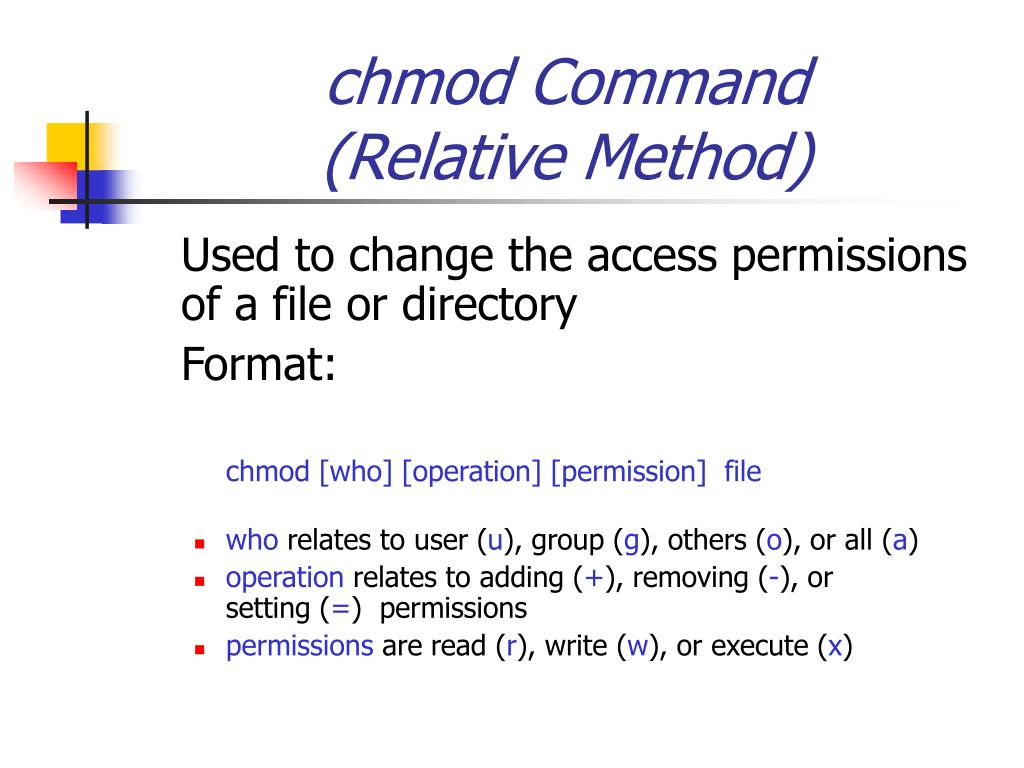


Ppt Agenda Powerpoint Presentation Free Download Id



Chmod Directories And Files Problem Hosting Support Infinityfree Forum



0 件のコメント:
コメントを投稿